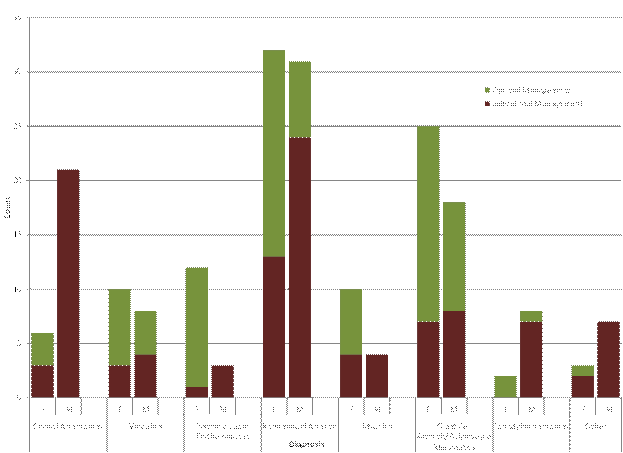Session Information
Session Type: ACR Poster Session C
Session Time: 9:00AM-11:00AM
Background/Purpose: One-fourth of hip fractures occur
in men. Men treated with oral glucocorticoids for at least 3 months are
particularly at risk. Studies have suggested that rapid bone loss begins early
in steroid use, peaks at 6 months and slows with continued usage. Inflammatory disease
induced hypogonadism may also increase fracture risk by lowering testosterone
secretion. Male patients over the age of 50, especially with chronic rheumatic diseases
on long term steroids may not be receiving adequate osteoporosis screening or
treatment compared to females.
Methods: An IRB approved retrospective chart review was
performed to identify male patients ≥ 50 years with a rheumatic diagnosis
to compare them to age matched women in our academic practice from 2010 to
2013. Inclusion criteria were patients on any dose of prednisone for ≥ 3
months and at least 3 clinic visits. Exclusion criteria were recognized osteoporosis
and prior bisphosphonate use. Demographic data, dose and length of steroid use,
timing of DXA from initiation of prednisone use, T-score and calcium and
vitamin D supplementation use was collected. Optimal care was defined as screening
with a baseline DXA within 6 months of initiation of prednisone, calcium and
vitamin D supplementation and osteoporosis treatment or prophylaxis when
indicated. Patients not meeting these criteria were defined as receiving
sub-optimal care. Fisher’s exact test was used to compare categorical variables.
A binary logistic regression model was run to account for any differences that
age, ethnicity or diagnosis may have on the outcomes between the two groups.
Results: 100 male patients met the inclusion criteria.
100 women were then randomly age matched to the men. Average age was 63.4 vs 66
(M:F); 50% vs 52% (M:F) were African American and 31% vs 32% (M:F) had
Rheumatoid Arthritis. 82% of females were on calcium-vitamin D vs 53% of men (P<
0.001). 82% of women had T-scores available vs 57% of men. DXA readers ordered
more scans. Faculty < 5 years from training provided more optimal care. (61%
vs 33% (> 5 years); p < 0.001). Osteoporosis screening for vasculitis
spectrum diseases was more likely compared to other diseases in both groups.
(Figure 1) Overall 67% woman received
optimal care in comparison to 22 % men (p = 0.001).
Conclusion: To our knowledge, our study is the first
to analyze trends primarily in patients with chronic inflammatory disease in a large
academic rheumatology practice. Physicians who were DXA readers for the clinic
were more likely to order a DXA although notably not better with optimal care. Recent
graduates were better at osteoporosis management overall. Men were 8 times
less likely to receive optimal osteoporosis management as compared to women.
This highlights gender gaps in management of osteoporosis in a vulnerable
population with inflammatory diseases taking steroids.
Figure 1
To cite this abstract in AMA style:
Shah H, Annapureddy N, Jain R. Glucocorticoid Induced Osteoporosis Screening and Treatment: A Gender Comparison in a Cohort of Patients with Underlying Rheumatologic Diagnosis in a Tertiary Care Setting [abstract]. Arthritis Rheumatol. 2015; 67 (suppl 10). https://acrabstracts.org/abstract/glucocorticoid-induced-osteoporosis-screening-and-treatment-a-gender-comparison-in-a-cohort-of-patients-with-underlying-rheumatologic-diagnosis-in-a-tertiary-care-setting/. Accessed .« Back to 2015 ACR/ARHP Annual Meeting
ACR Meeting Abstracts - https://acrabstracts.org/abstract/glucocorticoid-induced-osteoporosis-screening-and-treatment-a-gender-comparison-in-a-cohort-of-patients-with-underlying-rheumatologic-diagnosis-in-a-tertiary-care-setting/

